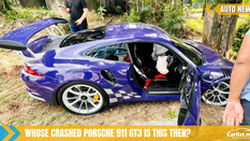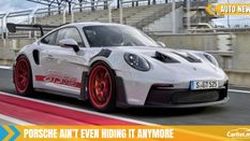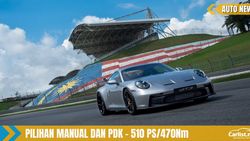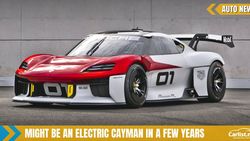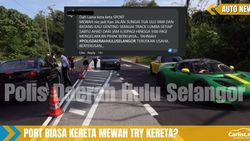Key Highlights
Overview
Porsche 911 2021-2022 Review
There is no car in the world that has had an evolution as progressive as the rear-engine Porsche 911 – and this latest generation 992 model is the most sophisticated, refined, and potent model yet. While it is an entirely new generation, launched just a few years ago, the actual powertrains within these vehicles had their first iterations introduced with the facelift of the 991 generation model, with wholesale turbocharging across nearly every variant of the 911.
This change is as important as the transition from air-cooled to water-cooled engines with the 993 generation model. If the progression of generation names confuse you, we can totally understand – as a quick revision the order goes 911, 930, 964, 993, 996, 997, 991, and finally 992. Each generation saw the introduction of different variants, including Targa top and Cabriolet models that all fall under the 911 umbrella.
To decipher the naming system is fairly simple. The Porsche 911 Carrera is the most basic form of the sports car from Stuttgart, and the addition of an S on the end denotes a higher performance version, and GTS takes this even further. If there is a 4 somewhere in the name, it indicates all-wheel drive over the traditional rear-wheel drive – though the 911 Turbo and 911 Turbo S are exclusively available in all-wheel drive.
On the note of the 911 Turbo, these models used to be the only turbocharged variants of the 911 – until the aforementioned powertrain change with the facelift of the 991 generation model. Now the Turbo name denotes a larger, more potent engine that makes a staggering amount of power. At the top of the range sit the GT models – GT3, GT3 RS, and GT2 RS – with only the first of the three being launched as of yet for the 992.
Porsche 911 2021-2022 Specifications
There are as many different powertrains for the Porsche 911 as there are colours of the rainbow – even more actually, if you consider that there are variants yet to be released. The most basic powertrain is a twin-turbocharged 3.0-litre flat six engine that makes 385 PS and 450 Nm of torque, found in the regular 911 Carrera and 911 Targa variants. One step up is that same engine pushed to 450 PS and 530 Nm of torque in the 911 Carrera S, 911 Carrera 4S, and 911 Targa 4S.
Going one step further is the GTS variant, which pushes that engine up to 480 PS and 570 Nm of torque. As the suffix suggests, this is found in the 911 Carrera GTS, 911 Carrera 4 GTS, and 911 Targa 4 GTS. If the number of variants is confusing, just wait – there’s even more to come.
The 911 Turbo and Turbo S both come with a twin-turbocharged 3.7-litre flat six engine – the former has that engine making 580 PS and 750 Nm of torque, while the latter turns it up to a stratospheric 650 PS and 800 Nm of torque. Yes, we’re talking performance levels that could fight supercars on even ground – although the pricing certainly reflects that potency.
We’re not done yet. The current top of the Porsche 911 range is the 911 GT3 and GT3 Touring – as the 911 GT3 RS and 911 GT2 RS of this generation have yet to be released. These models come with a naturally aspirated 4.0-litre flat six engine, making 530 PS and 470 Nm of torque. While this variant makes less power than the Turbo models, it’s about potency and rawness with a 9,000 rpm redline, and instant response – as well as a unique chassis that deserves its own article.
The weights for the Porsche 911 swing wildly, from as low as 1,418 kilograms in the 911 GT3, to as high as 1,710 kilograms in the 911 Turbo S Cabriolet. The wheelbase remains the same across the range at 2,450 mm, while lengths vary between 4,519 mm and 4,535 mm – overall relatively compact dimensions, and something you have to see in real life to understand. Most of the Porsche 911 variants are available exclusively with an 8-speed dual-clutch type automatic gearbox, though some variants have an optional 7-speed manual, and the 911 GT3 comes with either a 7-speed dual-clutch type automatic gearbox or a 6-speed manual.
Porsche 911 2021-2022 Exterior
There’s nothing that looks quite like a Porsche 911, with a roofline that has its roots in a model designed over half a century ago. The gentle curve of the roof meeting the rear, the recessed bonnet and headlight bulges that merge into the front fenders, the rake of the front windscreen – these are all iconic elements that define the legend of the 911.
Porsche 911 2021-2022 Interior
The launch of this generation of the Porsche 911 saw the largest jump in terms of interior styling, falling in line with other Porsche pickings like the current-generation Panamera and Taycan. Aggressively dark tones – which can most likely be customized depending on your preferences – fill out the dashboard, along with a simple and functional centre console layout and switchgear.
Porsche 911 2021-2022 Safety Features
Perhaps the most interesting safety feature in the Porsche 911 is its wet mode, which actively monitors the acoustic spray pattern of water in the front wheel wells to help the systems determine what’s about to happen. This is especially important for a rear-engine vehicle like the Porsche 911, where the slightest bit of instability in the wet can have very nasty knock-on effects. Beyond this, there is also Autonomous Emergency Braking, and your usual smattering of electronic stability and traction control, ABS with EBD, and so on.
Porsche 911 2021-2022 Strengths and Weaknesses
If there’s one thing that Porsche refuses to admit, it’s the fact that the rear-engine layout of the 911 is a compromise compared to the mid-engine layout of their “entry level” sports cars like the Cayman and Boxster. It’s for this reason that Porsche has constantly kept the 911 more powerful and potent across the range – but the reality that most enthusiasts know is that the mid-engine platform is more capable than the rear-engine 911.
That being said, there are many unique things about the way a 911 behaves that make it an excellent sports car – as well as being one you can use more regularly than other offerings. Decades of engineering have taken the sharp edges off this peculiar rear-engine layout, making it easier to drive – especially in tandem with very clever and sophisticated electronics. It also certainly helps that the Porsche 911 has a pair of rear seats that you could cram a pair of children into if you really needed to.
There’s also the history of the 911 to speak of, both as a car that competed in motorsports (to this day) and as one that represented driving purity on the open road. Regardless of your opinion on whether the drivetrain layout of the 911 is perfect, one can’t deny that 911s have been used to travel the world, forming the basis of many fantastic memories for a group of incredibly lucky owners.
Porsche 911 2021-2022 Price
It may not come as a surprise, but many variants of the Porsche 911 are strictly on a Price On Application kind of positioning, though the two variants listed should give you an idea of what ownership will cost you. The last known prices for the 911 Carrera S and 911 Carrera 4S were RM 1.15 million and RM 1.22 million respectively, while the 911 Turbo S currently clocks in at RM 2,235,463. Bear in mind, there are other models available too – the regular 911 Carrera and 911 Turbo variants, the mid-range 911 Carrera GTS variants, extremely potent 911 GT3 variants, and a whole range of cabriolet and targa body styles in addition to the regular coupe form.
Porsche 911 2021-2022 Features
It can be hard to ascertain exactly what features come with the Porsche 911, because there is an extremely intensive list of options that you can outfit your car with – and in most cases, customers will tick a number of boxes that appeal to them in the pursuit of their perfect 911. That being said, Porsche does provide a number of amenities as standard – items such as adaptive cruise control, night vision assist, LED headlamps with DRLs, and twin seven-inch digital instrument panels flanked by free-floating circular displays, as well as a 10.9-inch display with capacitive touchscreen functionality for infotainment.
Porsche 911 2021-2022 Fuel Consumption
Fuel consumption for the Porsche 911 is extremely varied, as you might imagine. The entry level model is the 911 Carrera which returns 9 litres per 100 kilometres, or 11.1 kilometres per litre. The 911 Carrera S gets slightly better consumption at 8.9 litres per 100 kilometres, or 11.2 kilometres per litre. The 911 Turbo drops this to 11.1 litres per 100 kilometres, or 9.0 kilometres per litre – on par with the 911 Turbo S. The most thirsty of the bunch is the 911 GT3, which runs you 12.4 litres per 100 kilometres, or 8 kilometres per litre.
Exclusive deals for you
Get April Offers from authorized dealers near you!
Key Details
- Body Type: Coupe
- Transmission: Automatic
- Engine Capacity: 2981 cc
- Fuel Type: petrol
- Seat Capacity: 4
- Price: Price upon Request
Variations
Price upon Request
Key Details
- Body Type: Coupe
- Transmission: Automatic
- Engine Capacity: 2981 cc
- Fuel Type: petrol
- Seat Capacity: 4
- Price: Price upon Request
User Review of Porsche 911
Remarkable 480HP 997.1 turbo tuned till 600HP!
A fixed deposit you can drive.
Latest News
Similar cars
Latest Videos

Thank you!













